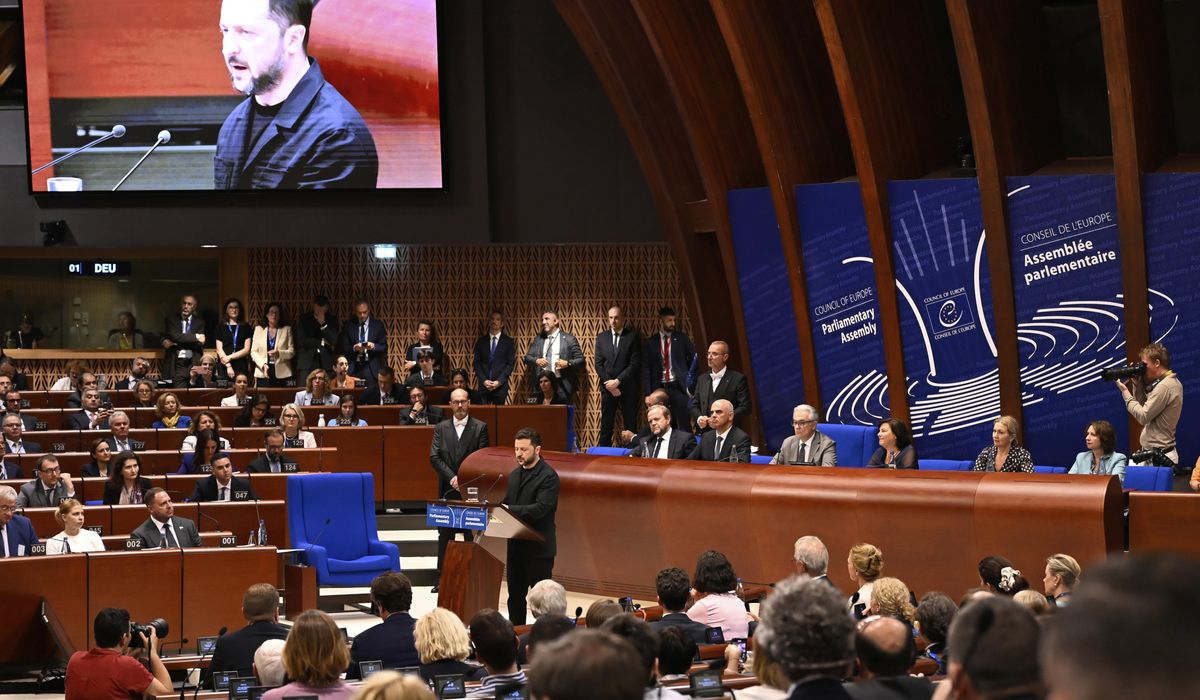


KYIV — For many Ukrainians, the deadliest war on European soil since World War II feels like it’s becoming a footnote to the global news cycle, fueling fears that Western attention is increasingly focused elsewhere as Russia has ramped up its attacks on the country.
There’s been a sharp shift in global media coverage since April: According to an analysis of major Western publications, stories on U.S.-Israeli strikes and Iran’s retaliations have outnumbered Ukraine-related reports by more than three to one.
Unsurprisingly, given the direct U.S. involvement in the strikes on Iran’s nuclear program, American media outlets across the political spectrum provided daily updates and a constant stream of expert analysis on the conflict in the Middle East.
Meanwhile, Ukraine coverage became much more sparse, with updates focusing primarily on battlefield reports and mentions in the context of this week’s NATO summit in the Netherlands — despite repeated entreaties from Ukrainian President Volodymyr Zelenskyy that Europe and the U.S. send more arms and impose harsher sanctions on Russia.
“We find it absurd to withhold sanctions in the hope of a ceasefire that Russia has repeatedly rejected,” said Alexander Khara, a Ukrainian diplomat and CEO of the Centre for Defence Strategies.
Against that backdrop, Kyiv’s expectations were low heading into the NATO summit Tuesday, but even those modest expectations were only partially met.
“We didn’t have high expectations,” Ms. Khara said. “Of course, we would have liked stronger language in the summit declaration regarding Russian aggression and Ukraine’s prospects for NATO membership, but we recognize the new political reality.”
While the final communique reaffirmed NATO’s commitment to Article 5 and identified Russia as a long-term threat, any mention of Ukraine’s membership path was conspicuously absent, and so was a direct condemnation of the Russian invasion.
“We have to make sure Ukraine can stay in the fight, that it has what it needs,” NATO Secretary General Mark Rutte said. “But we’re also working to secure a peace deal or a long-term ceasefire. And then we have to make sure that Ukraine has what it needs to prevent Vladimir Putin from ever trying this again in the future.”
The final statement from the alliance emphasized the need to increase defense spending and unity among allies, steps deemed necessary not only to deter further Russian aggression, but also to preempt President Trump’s repeated threats to abandon NATO and Ukraine altogether.
For his part, Mr. Trump, fresh from his success in brokering a ceasefire in the Middle East, sounded more receptive to helping Ukraine than he has in the past.
“These people really love their countries. It’s not a rip-off. And we’re here to help them protect their country,” he said during a final press briefing before returning to Washington.
Mr. Zelenskyy said he tried to convey to Mr. Trump that Russian President Vladimir Putin has no interest in a ceasefire, let alone lasting peace.
“It’s doubtful this changed Trump’s belief that his personal charisma could somehow sway the Russian dictator,” Ms. Khara said.
Away from the headlines, the war grinds on, with Russia having intensified its missile and drone strikes in recent weeks, targeting critical infrastructure and population centers across Ukraine.
Still, there was some positive news from the battlefield Thursday as Ukrainian forces halted Russia’s advance into the northern Sumy region and stabilized the front line near the border with Russia.
Ukraine’s top military commander, Col. Gen. Oleksandr Syrskyi, said that Ukrainian successes in Sumy have prevented Russia from deploying about 50,000 Russian troops, including elite airborne and marine brigades, to other areas of the front line.
His claim couldn’t be independently verified, and Russian officials made no immediate comment.
Amid the hostilities, the two sides have continued swaps of prisoners of war agreed on during recent talks between their delegations in Istanbul.
Russia’s Defense Ministry and Ukrainian authorities said another exchange took place on Thursday.
Ukrainian officials say fierce fighting is also taking place in the eastern Donetsk region.
Ukraine’s air force said Thursday that Russia deployed 41 Shahed and decoy drones across the country overnight, wounding five people. It said that 24 drones were either intercepted or jammed.
“We hope that images of Russian terror will persuade Trump to support sending air defense systems to Ukraine,” Ms. Khara said.
Many Ukrainians believe that if Mr. Trump were to witness the devastation and suffering firsthand, it might spur him to intensify — or at the very least, maintain — his administration’s support for their country.
This wish seemed to have been at least partially answered at the NATO summit on Wednesday, when Mr. Trump was asked by Ukrainian BBC journalist Myroslava Petsa whether the U.S. would be providing Ukraine with Patriot air defence systems.
The American president took an interest in her situation, asking where she was from and — upon hearing that she was Ukrainian — whether her husband was serving, to which she answered yes.
“I wish you a lot of luck, I can see this is very upsetting to you, and say hello to your husband,” Mr. Trump said.
The exchange highlights the staggering human cost of Russia’s invasion, which has been dragging on for more than three years now.
Surveys have shown that 78% of Ukrainians reported having at least one close relative or friend injured or killed in the course of Russia’s invasion.
